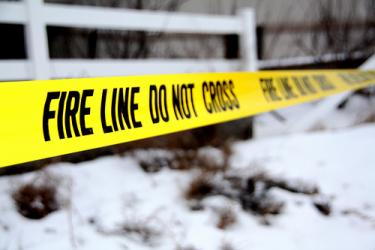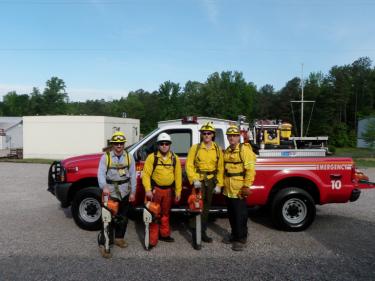What to Do When Wildfires Strike
If a wildfire is approaching your home, here’s what you can do to keep yourself and your family safe and minimize the damage to your land:
Pre- and Post-Wildfire Checklist:
- Call for help. If the fire has disrupted your electrical or phone service, use a cell phone.
- Close all windows, doors, vents and other openings, and draw your shutters, drapes or blinds to keep out sparks.
- Put on protective clothes, including long pants, long-sleeved shirt, closed shoes, gloves and a handkerchief to shield your face
- Have tools and water available—a shovel, rake, long water hose and water-filled buckets may be helpful. Leave a ladder against your house in plain view in case firefighters need to access your roof.
- Remove dead leaves, vines, and other potential fuel for the fire.
- If your roof isn’t fireproof, wet it down with a hose. You may also choose to wet shrubs and other flammable objects within 15 feet of your home.
- Turn off your natural gas, propane, or other residential fuel.
- Put as many of your vehicles into your garage (if you have one) as you can, and prepare the vehicle you plan to use if you evacuate. Make sure to close the garage door behind you if you do evacuate.
- If you are advised to evacuate, immediately take your family and pets to a safe location.
Once you return, you’ll want to:
- Carefully inspect your home before re-entering it. Check the roof and all rooms for embers, and have your propane tank, heating oil tank, or other source of fuel professionally inspected before using it.
- If your home was damaged, have your water tested before consuming it. Damage to your plumbing system can contaminate your water with bacteria.
- Protect yourself while cleaning up debris. Wear a respirator or mask and wet the debris first, to minimize your exposure to ash and dust.
You’ll also need to check your trees for wildfire damage. Signs include:
- Black scorch marks on the trunks. If the bark has been scorched off or deeply burned around the entire circumference of the tree, that tree is unlikely to survive and should be considered unstable.
- Burned roots—these can be found by probing the ground, six to eight inches below the surface and up to several feet away from the base of the tree. Trees with burned roots are also considered unstable.
- Lost leaves or needles. Evergreens will need special protection after losing some or all of their needles, as this makes them especially susceptible to bark beetle attack.
If your woods are damaged by wildfire, don’t lose hope. Your forest can recover.
The most important step you can take, however, is to prepare for a wildfire before one ever happens. A few simple steps can fireproof your woods and your home well before disaster strikes.
Previous page
How can I get more tips?
It’s simple! Enter your email below.


